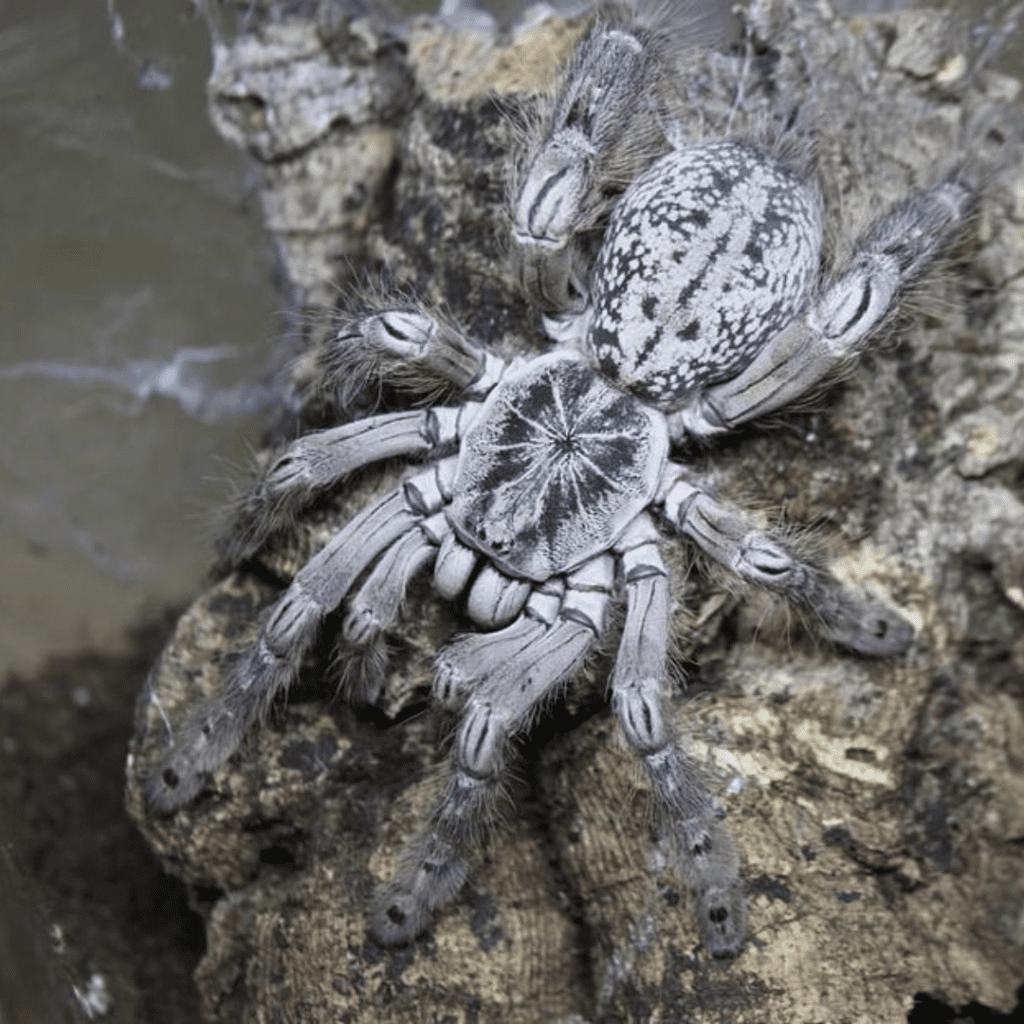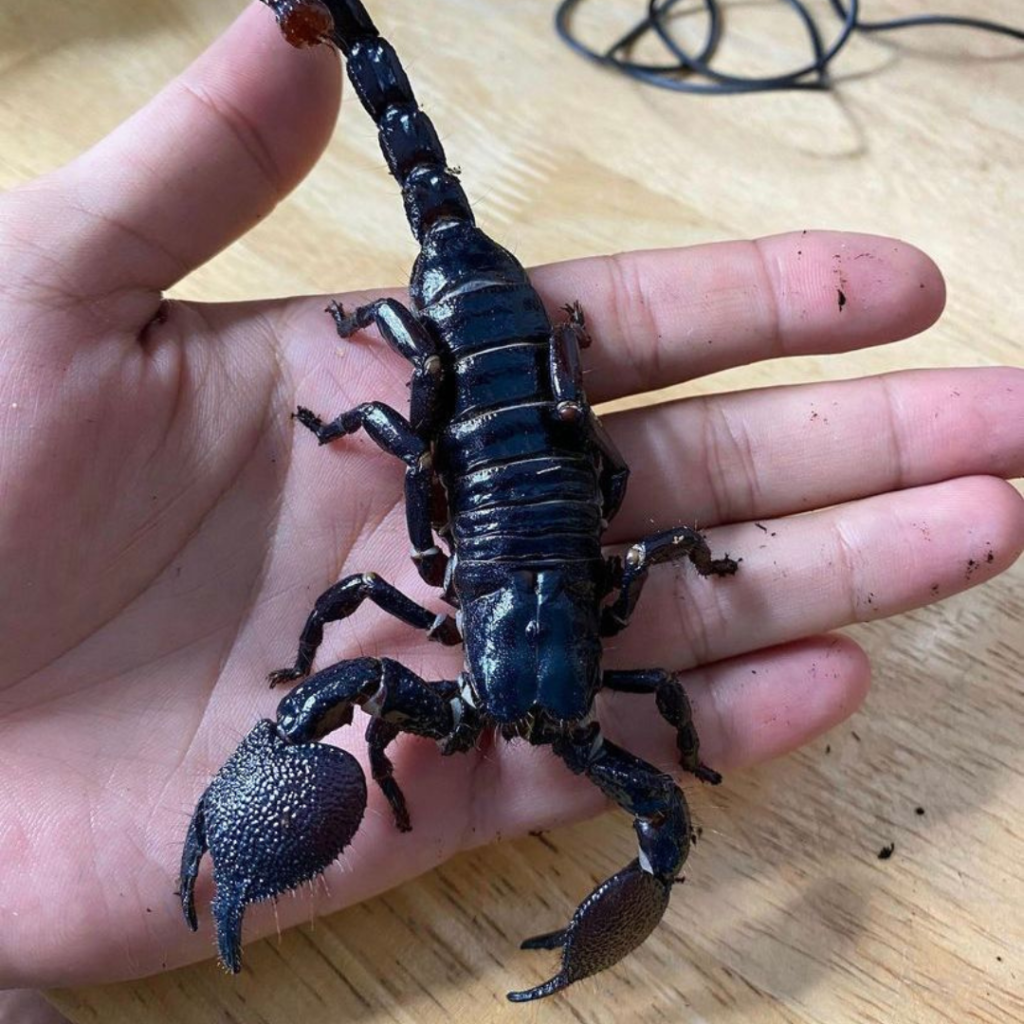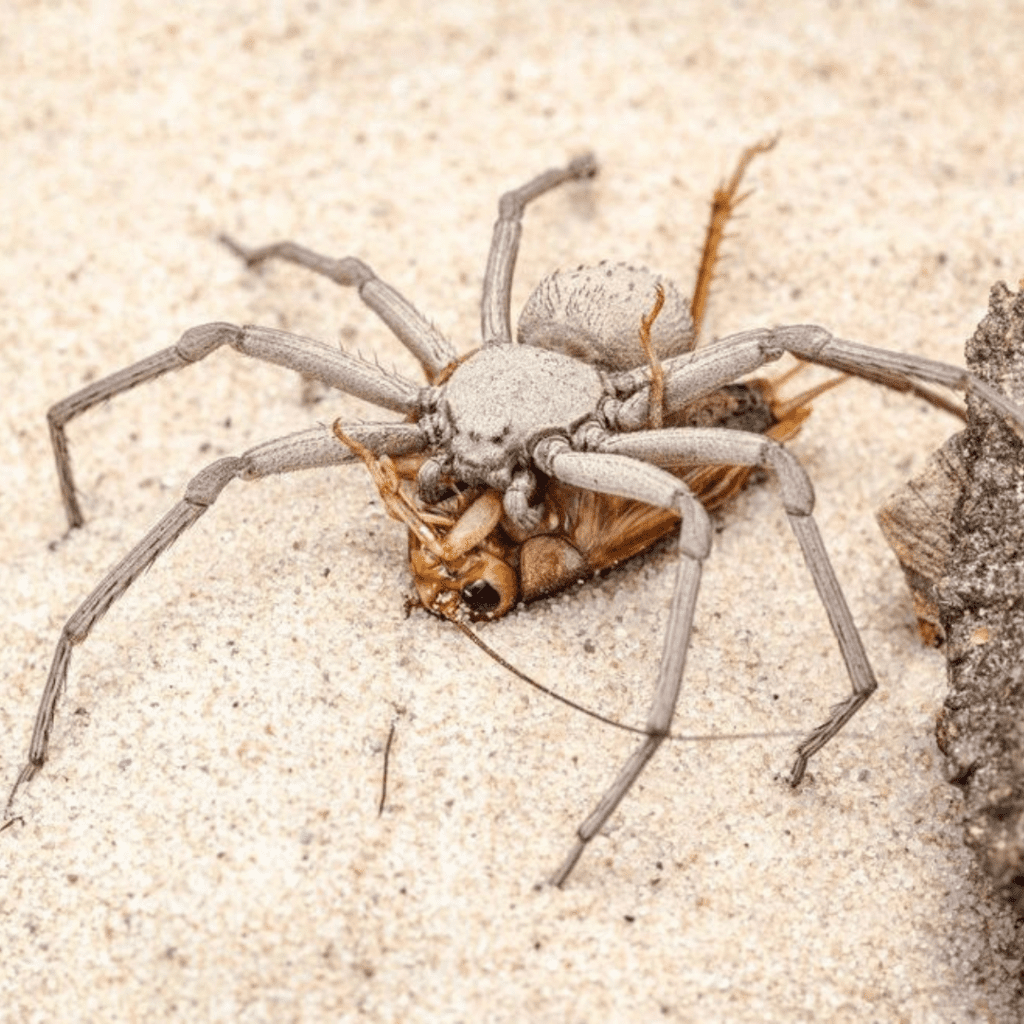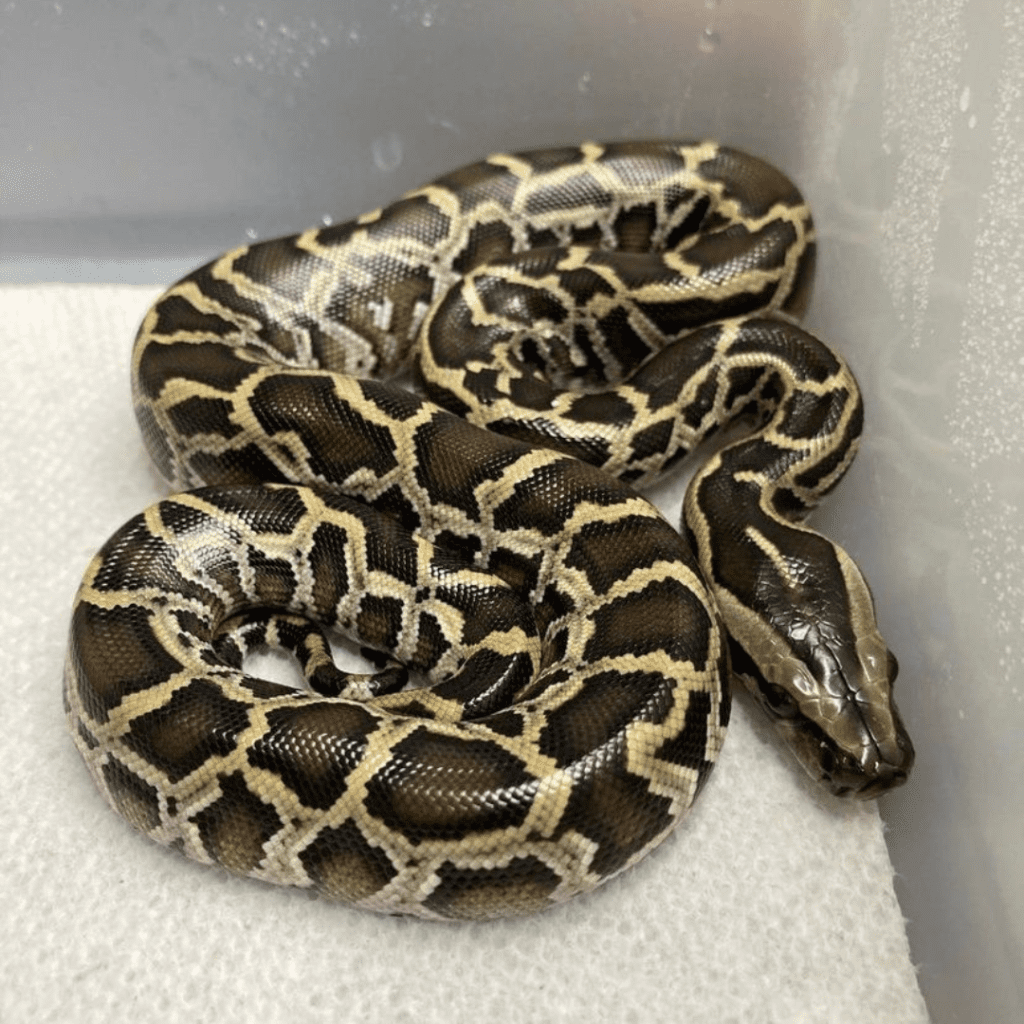Look But Don’t Touch: 35 Dangerous African Animals That We’d Never Want To Meet
Every year, upwards of 30 million tourists visit Africa. It’s a popular safari location and a must-see for globetrotters and adventure seekers. Africa is home to the most deadly animals known to man, yet man is the most dangerous animal known to these faunae. Many are deemed endangered owing to animal traffickers and habitat destruction as more people gain possession of their homes. As with every wildlife interaction, it’s critical to respect limits and keep a safe distance from the animals. Most do not strike unless they are hungry, injured, or provoked, so if you are considering a vacation to Africa, be mindful of your environment at all times. Look respectfully from a distance, and don’t touch! With all this in mind, these are Africa’s most hazardous creatures.
Tawny eagle
All eagles can be ravishingly violent when needed, and the Tawny eagle is no different. Like any large bird of prey, it soars high over open grounds and is considered one of the most competitive and opportunistic eagle sub-species to have been discovered.

However, due to global warming and other risks that make it hard for them to eat, eagles fly closer to densely populated areas than ever before. This pushes them to feel easily threatened around their nests and food. Be ready for bloody wounds if you get too close to a hungry eagle.
Puma
Pumas try to avoid human beings as much as possible. We could classify them as introverts, as they like to live independently from groups or herds. In fact, since the 1900s, only about 120 cases of Puma attacks on humans have been recorded. Interestingly, only 25 of those resulted in death.

Pumas are statistically larger than other big cats like lions and tigers, and far more adaptable and agile. They occupy hilly places where they enjoy the serenity like an old couple on their balcony. However, their physical strength is known to be enough to kill large mammals like bulls in just a few paw swipes.
Baboon
You look at a photo of a baboon, and you laugh at the fact that it is called a baboon. If you are a Harry Potter fan, you remember infamous dialogue. You know exactly what we’re talking about. However, baboons don’t always babble. In fact, they can be quite terrifying.

They’re known for their incredibly powerful jaws and they have a strong bite force that can literally crush human bones. They will put those jaws to good use and have been known to attack for food. We used to run away from baboons whenever we saw them, but now we going to sprint.
Baboon spider
We’ve already heard of how baboons are dangerous to humans, and we already knew about spiders. So imagine our shock when we read about this spider called a baboon spider. We were terrified and didn’t want to even see what that could entail.

Like the baboon species, these spiders are loud and distract their victims with confusing sounds that they create by rubbing their limbs together. Their venom, although not lethal to humans, will induce acute pain and localized irritation for up to five days.
Zebra
First things first: zebras. Are. Not. Horses. They’re cousins to the horse and donkey species, but not the same! Do you know how each snowflake is unique? Each zebra is unique like that — no two zebras have the same stripe pattern. Cool, right?

What’s uncool, though, is that they are super aggressive. They need a chill pill. Zebras have been known to attack with powerful kicks, to bite people that go near the, and there have even been reports of zebras murdering lions, too.
Termites
Termites are a massive problem if you own anything made of wood. If your entire house is wooden, we’ve got news for you, and it’s not pleasant. We always thought that termites only knew how to eat through wood, but it turns out we’re wrong!

Don’t worry though; a termite bite is only a little itchy and doesn’t cause any severe harm to your body. However, if an infestation occurs in one corner of your home, they will take over pretty quickly. They can even eat through cash and keys!
Violin spider
We think the person who named this spider misspelled the word violent. However, the violin spider has a body that looks similar to the fiddle. Although this insect is only an inch long and has a small and relatively painless bite, its venom can cause severe wounds in tissue destruction in human beings.

Do you remember the scene in the original Spider-Man movie where Peter Parker gets bitten by a spider and winces for a second, after which his day is normal? If you get bitten by a violin spider, you won’t wake up like Spider-Man, but with a bunch of ulcers and a lot of vomiting, instead.
Emporer scorpion
If you are looking to read about animals that are dangerous to human beings, you might want to skip the emperor scorpion. We are not saying that the emperor scorpion’s bite is not painful. It definitely is. But it’s not deadly. In fact, unlike other scorpions, this one is actually docile.

One of the only ways a human being can die in the presence of an emperor scorpion is if they are allergic to it. However, if you are allergic to the emperor scorpion and have the opportunity of knowing that fact, you may not want to go into the forest for a hike.
Caracal
This animal is absolutely adorable. It looks similar to a very large and fat housecat. The one difference, though, is that the ears are really big, and it has those eyes that tell you that it wants to kill you. Well, more so than a regular cat.

But sharp hearing, agility, and retractable Black Panther-type claws all combined make them into the superheroes of the animal kingdom in Africa. And they do instinctively attack anything or anyone that might come in its vicinity. Obviously, that includes humans.
Six-eyed sand spider
The name is pretty self-explanatory, but for those who refuse to look at the photo, here is a vivid description: imagine sand. Imagine sand on top of a spider. Imagine that spider has six eyes. Open your eyes. That’s it. Now one good thing about this spider is that is generally very introverted and shy.

That means we are lucky. It rarely ventures out if it senses that human beings are around. However, the venom from this spider bite can kill smaller animals within 5 to 12 hours. Still, if you see something slithering in the sand, just assume it is either a spider or a snake and get out of there.
African rock python
The African rock python can be anywhere from 10 to 16 feet long. We don’t think you understand the gravity of the situation. The snake can tie itself around the human body from head to toe and strangle a person in under a minute.

Unlike most snakes, the African rock python is non-venomous. However, that does not mean it’s not a threat. The sharp teeth of this snake can cause severe gashes, and by jabbing at its prey repeatedly, the snake can kill incredibly large mammals relatively fast.
Siafu Driver Ant
We definitely don’t want to mess with this group of ants. Even though they have a short lifespan, they are very defensive and fiercely protective about living their full potential in the 10 weeks that they survive on planet Earth.

Driver ants supposedly have the strongest jaws of any ant species. Their communities consist of over 20 million individual ants! Typically these ants attack in groups and work together like a dream. They can either kill a person or take over your home with a large infestation. We vote to surrender!
Tarantula hawk wasp
Yeah, that’s what we thought, too. How can a tarantula and a hawk and a wasp get together to make, well, anything? This is a fascinating but creepy-looking insect. But don’t be fooled by its beauty. The sting from a tarantula hawk wasp is considered one of the deadliest creatures after the black mamba snake.

It has a typical stinger like the average bee, but the stinger is large and thick and painful. Luckily for us, they don’t really care for human beings, but it has been observed that unbearable pain lashes down the body for about 5 to 10 minutes. The intensity of the pain can also lead to short-term memory loss.
Killer bees
At 19 mm in height, about 4000 bees together weigh only about 1 pound. That means these incredibly light insects are also great flyers. Unfortunately, they also know to attack in large numbers to protect their hive. They know exactly how to bring a man down to his knees.

They target the eyes in the face of their victim first, typically in large groups. They can even cover the entire surface area of a human being in less than two seconds. They are also known to be diligent chasers and will fiercely protect their hive from anyone that gets too close.
Button Spider
The button spider can only live up to one year of age. However, this 4 to 11 mm long body spider has a venom that can disorient, and cause pain, nausea, sweating, respiratory failure, and BP problems. If an anti-venom is not administered, the victim can be paralyzed or go into a coma.

In fact, what’s more, interesting is that the male button spider, called the brown button spider, is less venomous than the bite of a female button spider, commonly called the black button spider. We don’t know why that is, but all we can say is #GirlPower.
Cheetah
Although the oldest a cheetah can get is 12 years old, you can’t possibly look a cheetah in the face and not laugh at it for being a teenager. Chances are if you got close enough to look a cheetah in the face, you did not come out of that incident alive.

Some of us have always admired cheetahs for the speed, grace, and cunning strategizing of their attacks on their prey. And while they normally don’t get into contact with human beings, the last couple of decades have exposed the species to human poachers and photographers who have gotten a little too close for their liking.
Great white shark
We are pretty sure we don’t need to elaborate on why the great white shark might be a dangerous animal, but for those who don’t know, a great white shark can be as large as 21 feet in length. That’s… three NBA players stacked on top of the other.

The great white shark can live up to the age of 70. The average human being also doesn’t survive till 70, and we have medicines in hospitals. Anyway, the great white shark is colorblind, which is why it attacks people by mistake. It assumes that human beings are seals. Cute, right?
African leopard
Like the cheetah, the African leopard can be very, very fast. However, unlike the cheetah, it is very much likes eating us. Get the hint? They’re very aggressive and unpredictable in our known for their desperate expression and look every time they go out to hunt.

Like many other big cats, though, the African leopard is a nocturnal animal, meaning that it stays up most of the night and is comfortable in the darkness. As with many animals, they are fierce and prone to attacking when they are injured or feel threatened.
Tse tse fly
Before you read about the impact that this really tiny insect can have on the human species, we just want to reiterate and calm you down by reminding you that the chances of infection through this fly are less than 0.1%. Now, on to this scary bit.

The biggest thing to worry about is getting trypanosomiasis, commonly called the African Sleeping Sickness. Though, it won’t get to live to see if they transmitted the disease or not, because their lifespan is under four months, and symptoms of the African sleeping sickness only start to appear after several more months.
Black mamba
If you have seen the movie Megamind, you know that the black mamba is not just the name of a snake. Perhaps, like us, you did not even know that it was the name of a snake before it was the name of Megamind’s epic cloak. It’s okay, we all have all our days.

The slimy black snake can grow up to 14 feet in length, and its venom can paralyze the victim’s nervous system in under two minutes. One bite has enough toxins to kill ten human beings. In fact, if an anti-venom is not administered within 45 minutes of the bite, the person is guaranteed to die.
Ostrich
If everybody knows one thing about the ostrich, it is that they have abnormally large bodies and that they stick their head in the ground when they’re anxious. Okay, wait, that’s two. Anyway, did you know that it can reach anywhere between 6 and 9 feet tall?

If they wanted to, they could be NBA players. On a positive note, however, the ostrich will never attack humans unless completely provoked or frightened. But they are quick to get anxious… and human beings aren’t the most comforting of species on this planet.
Gorilla
We didn’t know that a gorilla can only live up to 40 years. To be fair, we never really thought about it. Like the ostrich, gorillas aren’t necessarily dangerous unless threatened. In fact, they can give human beings many signals to show when they are angry.

Next time you come face-to-face with a gorilla and see it grunting, stomping its foot, beating its chest — run. It is a sign that they do not like you or are you generally just having a really bad day. They are in no mood, and we suggest that you don’t get on their nerves.
Cape buffalo
The cape buffalo is considered one of the most dangerous animals in East Africa, but typically, it only charges when it is defending either itself or one of its calfs. However, they are also notorious for spreading diseases to other animals and livestock, including tuberculosis in foot-and-mouth disease.

Both of these can also impact human beings when consumed via another animal. Every year, it accounts for about 200 deaths in Africa. Knowing this, we are not exactly surprised that the Cape buffalo is also called the black death.
Goliath tigerfish
Looking at this fish reminded us of that scene from Now You See Me. Jokes aside, the Goliath tigerfish looks similar to a piranha, except that it’s about five times the size. But those teeth are equally as terrifying as their smaller counterparts.

Its teeth literally look like very sharp mini-swords. We would not want to be around that mouth ever. More importantly, the fish is overly brave, which is bad news for us. It can literally bite a chunk of our flesh in a single bite.
Hippo
Everybody thinks hippopotamuses are the cutest animals possible, and sometimes that idea is relatively true. However, hippos can be incredibly aggressive animals. A lot of the time, they have injured human beings and other animals in the process of finding food.

And beneath that chubby-looking face and that grand smile that we see in pictures, they have razor-sharp teeth that, if they make contact with a human being, can bisect a person in a nanosecond. In fact, with 3,000 kills per year, they might just be the most lethal large land animal.
Deathstalker scorpion
One of the creepiest looking animals on a planet, at least from the ones that have been discovered so far, is definitely the deathstalker scorpion. Yup, there is a reason as to why it’s called that. Its venom is one of the most dangerous on our planet.

The venom can lead to fluid retention in the lungs, convulsions, pain, swelling, nausea, diarrhea, and headaches, but also death. Even though it’s just 4 inches long, it can live up to 25 years. Isn’t that insane? Next time you see something crawling on the floor, you might not want to dismiss it as a cockroach.
Hyena
Did you know that a hyena can survive for up to 20 years? That kind of makes us uncomfortable and makes us think about the so-called allies that Scar from The Lion King had. No wonder they were so jumpy. They had a lot to do and not a lot of time to get it done. Anyway…

Typically spotted hyenas are very dangerous and aggressive. But they are more scavengers than active hunters. They get their food from the hard work another animal put in, and only attack livestock and human beings if they are injured, hungry, or feel threatened.
Elephant
It’s no surprise that elephants could literally squishy us with their toenail. We know they’re tall, and unsurpringly heavy, weighing in between 5000 to 14,000 kg. But they’re not just brawn, they have big hearts, too. Elephants are emotional animals.

This means they are quick to feel anxious, stressed, or even threatened. Yeah, that’s apparently a thing! No matter their size, animals are scared of us. Elephants tend to charge up to 30 miles per hour. In Africa alone, elephants cause about 500 deaths per year.
Sac spider
If you ever want to be in pain, be nauseous, or go into shock, getting bitten by a sac spider might be your best option. Jokes aside, even though this little insect weighs just about 3 miligrams and has a short-ish lifespan of a couple of years…

The venom from a sac spider can cause many different toxic effects on the body including skin and cell tissue damage. Many times, this can be permanent. If you do end up surviving that, you will likely be incredibly weak for months. No, thanks.
Rhino
Weighing an average of 2000 kg, a rhinoceros is not an animal you want to mess with. Even though they can be as short as 4 feet tall, they’re a force to be reckoned with. Although they have bad eyesight, it’s not as much of an advantage as you might think.

Because of their bad eyesight, they remain on high alert at all times. They rely on their other senses, but they’re still rather unpredictable. Fortunately, they really just prefer to be left alone. Too bad, though, because poachers take advantage of this.
Nile crocodile
When you step into Africa, don’t be surprised if before, you can feel something slimy coming up your leg, you’re already dead. There’s a chance you’ve been eaten by a 50-year-old crocodile. Just looking at this picture, we understand why Captain Hook was so afraid.

Yup! The Nile crocodile is almost double the height of an average human. They prefer live prey and eat pretty much anything that moves, killing about 200 to 300 people every year. Well, we doubt that this particular croc does anything other than chill with zookeepers all day.
Mosquito
Look, mosquitoes can be annoying, itchy, and really difficult to kill. But if you’re the kind who thinks “eh, why kill the poor thing, it only lives for a week,” don’t fool yourself. The Anopheles Gambia mosquitoes in Africa are significant malaria transmission sources.

They are officially considered to be one of the deadliest animals on the planet and account for over one million deaths every year. Think about it; smaller than half an inch, and this insect manages to bring us to our knees.
Lion
Everyone knows the lion, and everyone knows to run when they see or hear one. But did you know that a lion can literally end a human being’s life with just one swipe of their paw? And it’s not only because of their claws.

Lions are about 4 feet tall, and their body weighs about the average SUV. Their typical strength is known to be that of six body-building men. Lion attacks account for 250 fatalities each year in Africa, though it should be noted that they won’t attack unprovoked.
Africa wild dog
Don’t get the name wrong. The African wild dog is not the friendliest puppy that you will come across. It is often described by people who have come face-to-face with it as a wolf that’s been given a terrible makeover at a cheap parlor. However, they are incredibly intelligent and emotional beings and have very large families.

They don’t typically attack human beings. However, while attacking the livestock of farmers around them, if the farmer is aggressive towards these dogs and shoots at them, the African dogs get defensive and show their very sharp teeth to prove a point.
Puff Adder
Imagine seeing a snake that’s 3 feet in length and weighs over thirteen kilos. We can’t even lift that much at the gym. Snakes are creepy, but the puff adder is one of the worst. This very deadly snake’s venom is cytotoxic and causes the slow destruction of tissues.

If anti-venom is not delivered, the puff adder’s bite can be deadly. Despite their deadly nature, these snakes really aren’t aggressive until provoked. However, its poison has killed more people than any African snake. Yikes. The guy in this photo better be very careful.
